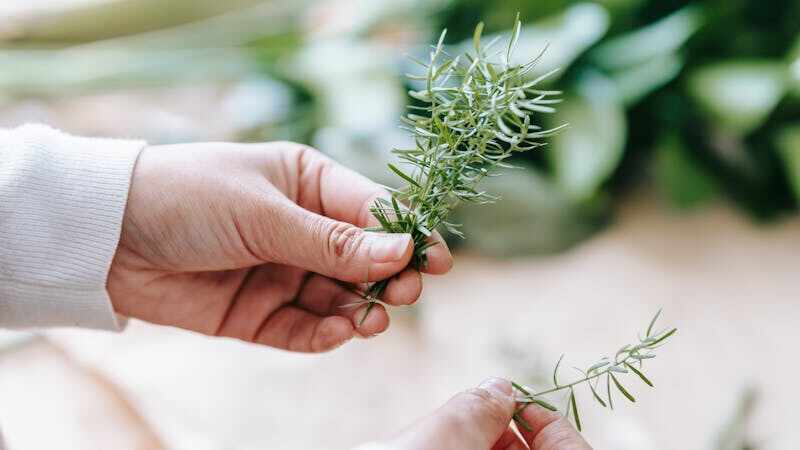In today’s fast-paced world, more people are looking for natural ways to maintain their health and wellness. Growing medicinal plants at home is not only a sustainable option but also provides easy access to powerful herbal remedies. Whether you’re dealing with a headache, a skin irritation, or just want to boost your immune system,

these medicinal plants can offer incredible benefits. In this article, we’ll explore five must-have medicinal plants that should be a staple in any home garden.
These plants are not only simple to grow, but they also provide a range of health benefits that make them worth cultivating, In this article, we’ll look into five must-have medicinal plants that should be added to any home garden,
list of Must-have medicinal plants
Dandelions (Flower)
Overview of dandelions
Medicinal uses of dandelions
How to grow and care for dandelions
2. Yarrow (Flower)
What is yarrow?
Yarrow’s medicinal properties
Growing yarrow at home\
3. Holy Basil or Tulsi (Herb)
Introduction to holy basil (Tulsi)
Medicinal benefits of Tulsi
Tips for growing Tulsi at home
4. Feverfew (Flower)
Feverfew’s history in herbal medicine
Key medicinal uses of feverfew
How to cultivate feverfew in your garden
5. Rosemary (Herb)
Why rosemary is a must-have plant
Health benefits of rosemary
Growing and caring for rosemary
The Importance of Cultivating Medicinal Plants
Sustainable living and herbal remedies
The environmental and personal benefits of growing your own medicine
How to Incorporate These Plants Into Your Daily Life
Use these plants for home remedies
Recipes and remedies for common ailments
Imagine walking into your garden and picking a leaf or a flower to make a natural remedy for a headache, stomach ache, or even stress relief. That’s the beauty of growing medicinal plants at home.
That is why we recommend you must have these plants in your home to help yourself to get healthy and fresh air. Not only do they provide fresh ingredients for herbal teas, tinctures, or balms, but they also ensure that you have easy access to nature’s pharmacy whenever you need it.
With concerns over synthetic drugs and the side effects of modern medicine, more people are turning to traditional herbal remedies. These natural solutions have been used for centuries, and many cultures still rely on plants to treat common ailments. By growing your medicinal plants, you’re taking a step toward a healthier, more self-sufficient lifestyle.
Why should you grow must-have medicinal plants at home?
There are several reasons why you grow must-have medicinal plants:
• Sustainability: Growing your medicinal herbs reduces your reliance on store-bought products that are often processed and packaged with chemicals.
By growing your herbs, you reduce your reliance on commercial farming methods, which often involve the use of pesticides, fertilizers, and extensive transportation. It helps reduce your carbon footprint and supports more environmentally friendly practices.
When you grow your Medicinal plants, you have complete control over their cultivation. You can choose organic methods, avoid harmful chemicals, and ensure that plants are grown in a healthy environment.
Tending to a garden can foster a deeper connection with nature and boost your mental well-being. Gardening can be therapeutic, providing stress relief and promoting mindfulness.
• Cost-effective: Once established, medicinal plants can save you money on over-the-counter medications.
• Convenience: Having these plants at your fingertips ensures you can make remedies whenever you need them.
• Natural Healing: Many of these plants have potent healing properties, without the harsh side effects of synthetic drugs.
The Benefits of Home-Grown Remedies
Home-grown medicinal plants allow you to tailor remedies to your specific needs. For instance, if you’re prone to headaches, growing feverfew can provide relief. If you’re looking to improve digestion or boost your immune system, holy basil can be your go-to herb. The plants covered in this article are not only powerful but are also relatively easy to grow in various climates.
Dandelions (Flower)

Overview of Dandelions
Often observed as a weed, dandelions (Taraxacum officinale) are a versatile medicinal plant that is making them must must-have addition to any home garden. comeback in the world of herbal medicine. The bright yellow flowers and jagged leaves of dandelions are packed with nutrients and have a variety of medicinal properties.
Medicinal Uses of Dandelions
Dandelions have been used in traditional medicine for centuries, primarily for their detoxifying and anti-inflammatory properties. The roots are often used in teas to help cleanse the liver and kidneys, while the leaves can be eaten to improve digestion. Dandelions are also known to aid in.
• Detoxification: Dandelion tea or tinctures are excellent for promoting liver health and flushing out toxins.
• Digestive Health: The leaves contain compounds that stimulate appetite and improve digestion.
• Skin Care: Dandelions have been used in skincare products to treat acne, eczema, and other skin issues.
How to Grow and Care for Dandelions.
Dandelions are incredibly hardy and can grow in almost any soil type, They can take little shade, but they prefer direct sunlight. To grow dandelions at home, In early spring, sow the seeds straight into the ground; keep the soil damp but not soggy. Harvest the leaves before the flowers appear for the best flavor.
Yarrow (Flower)

What is Yarrow?
Yarrow (Achillea millefolium) is a flowering plant known for its ability to heal wounds and reduce inflammation. Its feathery leaves and clusters of small flowers make it a beautiful addition to any garden, but it’s the medicinal properties that make yarrow a must-have plant for homes.
Yarrow’s Medicinal Properties
Yarrow has long been valued for its wound-healing abilities. Historically, soldiers used yarrow to treat battle wounds and stop bleeding. It’s also known for:
• Anti-inflammatory Effects: Yarrow can reduce inflammation, making it useful for treating minor cuts and bruises.
• Fever Reduction: Yarrow is often used in herbal teas to lower fevers by promoting sweating.
• Digestive Support: Yarrow tea can help relieve indigestion and bloating.
Growing Yarrow at Home
Yarrow is easy to grow and requires minimal care, making it a great choice for beginner gardeners. It prefers full sun and well-drained soil. To grow yarrow:
• Sow seeds or plant seedlings in early spring.
• Water sparingly, as yarrow is drought-tolerant.
• Harvest the leaves and flowers as needed for medicinal use.
Holy Basil/Tulsi Medicinal Plant
Introduction to Holy Basil (Tulsi)

Tulsi, or holy basil, is highly valued in Ayurvedic medicine due to its numerous health advantages, This aromatic herb is considered best in Asia and is often grown in households as a spiritual and medicinal plant. Tulsi is a must-have herb for homes due to its adaptogenic properties, which help the body respond to stress.
Medicinal Benefits of Tulsi
Tulsi is known as the “Queen of Herbs” in Ayurveda, and for good reason. It has been used for thousands of years to promote health and longevity. Some of its key benefits include:
• Stress Relief: Tulsi helps reduce stress and anxiety by balancing cortisol levels.
• Immune Support: Tulsi has strong antimicrobial properties, making it a great herb for boosting the immune system.
• Respiratory Health: Tulsi is often used to treat respiratory ailments such as coughs, colds, and asthma.
Tips for Growing Tulsi at Home
Tulsi is a tropical plant that thrives in warm, sunny conditions. To grow Tulsi at home:
• Plant Tulsi seeds in rich, well-draining soil.
• Keep the plant in a sunny spot with at least 6 hours of direct sunlight.
• Water regularly but avoid overwatering
Feverfew (Flower)

Feverfew’s History in Herbal Medicine
Feverfew (Tanacetum parthenium) has been used in herbal medicine for centuries, primarily for its ability to prevent and treat migraines. This flowering plant, which belongs to the daisy family, is a must-have for anyone who suffers from frequent headaches or migraines.
Key Medicinal Uses of Feverfew
Feverfew’s main claim to fame is its ability to reduce the severity and frequency of migraines. It’s also used for:
• Pain Relief: Feverfew acts as a natural pain reliever, making it useful for treating arthritis and muscle aches.
• Anti-inflammatory: Feverfew has anti-inflammatory properties, which can help reduce swelling and inflammation in the body.
• Menstrual Relief: Feverfew has been used to alleviate cramps and menstrual discomfort.
How to Cultivate Feverfew in Your Garden
Feverfew is a hardy plant that grows well in most gardens. Although it can withstand some shade, it likes full sun, To grow feverfew at home:
• Plant seeds or seedlings in well-drained soil in early spring.
• Water regularly but ensure the soil doesn’t become too soggy.
• Harvest the leaves and flowers for use in teas and tinctures.
Rosemary (Herb)
 Why Rosemary is a Must-Have Plant
Why Rosemary is a Must-Have Plant
Rosemary (Rosmarinus officinalis) is a popular herb known for its culinary and medicinal uses. It’s an evergreen shrub. with needle-like leaves and a distinct fragrance that can uplift any garden. Not only does rosemary add flavor to dishes, but it also possesses powerful medicinal properties, making it a must-have in your home garden.
Health Benefits of Rosemary
Rosemary is much more than a kitchen staple. It’s packed with antioxidants, anti-inflammatory compounds, and essential oils that promote overall health. Some of the key benefits include:
• Memory Boost: Rosemary has been linked to improved cognitive function and memory. It’s often used in aromatherapy to enhance focus and mental clarity.
• Digestive Health: The herb stimulates the production of bile, aiding digestion and reducing bloating and indigestion.
• Antioxidant Properties: Rosemary contains antioxidants that help neutralize harmful free radicals in the body, supporting the immune system.
• Pain Relief: Rosemary oil is often used topically to relieve muscle pain, joint pain, and headaches.
Growing and Caring for Rosemary
Rosemary is a hardy plant that thrives in warm climates, but it can also be grown indoors or in containers.
the following advice can help you cultivate rosemary, Light: Rosemary requires full sunlight, so place it in a sunny location.
• Soil: The plant prefers well-draining, sandy soil.
• Water: Rosemary is drought-tolerant, so water sparingly, making sure the soil is not waterlogged.
• Pruning: Regular pruning encourages bushier growth and ensures the plant remains healthy.
The Importance of Cultivating Medicinal Plants
As we move toward a more eco-conscious and health-conscious lifestyle, growing medicinal plants at home has become an essential part of sustainable living.

These plants allow you to reduce your dependence on store-bought remedies, minimize your carbon footprint, and promote personal well-being. The medicinal plants we’ve discussed—dandelions, yarrow, tulsi, feverfew, and rosemary—are not just decorative additions to your garden but must-have tools for natural healing.
Sustainable Living and Herbal Remedies:
Incorporating medicinal plants into your home is a step toward self-sufficiency. By growing your own herbs, you control the quality of the remedies you use and reduce waste from packaging and chemical processing. Moreover, these plants offer long-term benefits, as they regenerate and can be used repeatedly.
Environmental and Personal Benefits of Growing Your Own Medicine
• Less Waste: Growing your plants reduces the environmental impact associated with the production and transportation of commercial medicines.
• Chemical-Free: Homegrown herbs are free from pesticides and chemicals that are often found in store-bought products.
• Connection to Nature: Tending to your own medicinal plants strengthens your connection with nature and encourages mindfulness about health and well-being,
How to use these plants in your day-to-day activities:

Now that you know the incredible benefits of these must-have medicinal plants, let’s explore how you can use them daily to improve your health. Each of these plants can be used in a variety of ways, whether as teas, tinctures, oils, or in topical applications.
Using Dandelions for Daily Detox
Dandelions are excellent for supporting liver health and digestion. You can make a simple tea using dried dandelion roots or leaves. Drink it in the morning to kick-start your metabolism and detoxify your body naturally. You can also use fresh dandelion leaves in salads for an extra boost of vitamins and minerals.
Yarrow for Healing and Fever Reduction
Yarrow tea can be consumed to reduce fevers or soothe an upset stomach. For wounds and cuts, you can apply yarrow leaves directly to the skin, as they help stop bleeding and promote healing. It’s a good idea to keep dried yarrow on hand in case of emergencies.
Tulsi as a Stress Reliever
Holy basil, or Tulsi, is best known for its stress-relieving properties. A warm cup of Tulsi tea at the end of the day can help calm your mind and body. Tulsi can also be used in homemade skincare products to combat acne and other skin issues.
Feverfew for Migraine Relief
If you suffer from migraines, feverfew can be your best friend. Drinking feverfew tea or taking feverfew supplements regularly can help reduce the frequency and intensity of migraines. You can also dry the leaves and make a tincture to use as needed.
Rosemary for Cognitive and Digestive Health
Add rosemary to your meals to enhance digestion and improve memory. Rosemary oil can also be used in aromatherapy—just a few drops in a diffuser can help improve focus and mental clarity. If you experience muscle pain, dilute rosemary essential oil in a carrier oil and massage it into the affected area.
Conclusion: Building Your Medicinal Garden
Incorporating these must-have medicinal plants into your home garden is one of the best decisions you can make for your health and well-being. These five must-have medicinal plants—dandelions, yarrow, holy basil (Tulsi), feverfew, and rosemary—are not only easy to grow,
but they also offer a range of benefits that make them indispensable. From stress relief and improved digestion to wound healing and migraine prevention, these plants provide natural, effective remedies for a variety of common ailments.
By cultivating these plants, you’re not just growing a garden; you’re creating a personal pharmacy filled with natural solutions. Start small by picking one or two plants that resonate with your health needs, and over time, you can expand your collection and expertise.
With a little care and attention, these must-have plants will flourish in your home, offering you fresh, sustainable, and potent remedies whenever you need them.
FAQs
1. How do I make dandelion tea?
To make dandelion tea, you can use either fresh or dried dandelion roots and leaves. Boil water and steep 1-2 teaspoons of dried dandelion in hot water for 10-15 minutes. Strain and enjoy. If using fresh parts, rinse them thoroughly before steeping.
2. Can I grow a yarrow in a container?
Yes, yarrow can be grown in a container as long as it has well-draining soil and plenty of sunlight. Make sure to water sparingly, as yarrow is drought-tolerant and doesn’t like overly wet conditions.
3. How often should I consume Tulsi for stress relief?
For general stress relief, you can drink Tulsi tea 1-2 times per day. Tulsi has adaptogenic properties that help balance stress hormones, but it’s always a good idea to start with a small amount and adjust based on your body’s response.
4. What is the best way to use feverfew for migraines?
To use feverfew for migraines, you can make a tea or take it in capsule form. For the tea, steep 1-2 teaspoons of dried feverfew in hot water for 10-15 minutes. Drinking this regularly can help prevent migraines.
5. Can rosemary grow indoors?
Yes, rosemary can grow indoors as long as it gets plenty of sunlight—at least 6 hours a day. Place the pot in a sunny window, and make sure the soil drains well. take care not to overwater the plant


